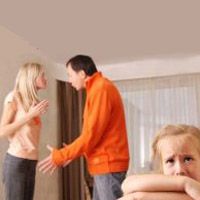Article
For Patients with Chronic Pain…Blame Dad?
Author(s):
A Japanese study suggests that parental bonding style during childhood is associated with the prevalence of chronic pain in adults in the general population and that the association is more robust for paternal bonding than for maternal bonding.

A Japanese study suggests that parental bonding style during childhood is associated with the prevalence of chronic pain in adults in the general population and that the association is more robust for paternal bonding than for maternal bonding.
The study, published recently in BMC Psychiatry, wasn’t about the genetic factors behind chronic pain, but rather the relationship between how parents bonded with pain patients during their childhood and what impact this may have on both the perceptions and actual experience of pain.
The study is among many that look at chronic pain as a complex biopsychosocial condition influenced by a wide range of psychosocial factors, including beliefs about pain, pain-related fear, self-efficacy, and psychological distress including pain catastrophizing, anxiety, and depression. In samples of patients with a chronic pain condition, those with insecure attachment reported significantly higher levels of pain intensity, disability, and pain related suffering and lower level of pain self-efficacy.
In the cross-sectional study of 760 community-dwelling Japanese adults, they were asked if they had pain that had been present for six months or more. They completed the Parental Bonding Instrument (PBI), a self-administrated questionnaire designed to assess perceived parental bonding, and a patient health questionnaire to assess current depressive symptoms.
The PBI consists of care and overprotection subscales that are analyzed by assigning the parental bonding style to one of four quadrants: Optimal bonding (high care/low overprotection), neglectful parenting (low care/low overprotection), affectionate constraint (high care/high overprotection), and affectionless control (low care/high overprotection). Logistic regression analysis was done to estimate the contribution of the parental bonding style to the risk of chronic pain, controlling for demographic variables. As part of the PBI, patients were asked their perceptions on topics such as, “Appeared to understand my problems and worries” or “Tried to control everything I did,” among many others. The participants were asked to score their father’s and mother’s attitudes separately.
Compared to the optimal bonding group, the odds ratios (ORs) for having chronic pain were significantly higher in the affectionless control group for paternal bonding (OR: 2.21, 95 % CI: 1.50-3.27) and for maternal bonding (OR: 1.60, 95 % CI: 1.09-2.36). After adjusting for depression, significance remained only for paternal bonding.
“The fact that fathers have been shown to be much more likely to use physical punishment and abuse than mothers in several epidemiological studies may also be related to these findings,” the study authors suggested. “Clearly, further studies are needed to elucidate the mechanism(s) whereby parental care affects the development of chronic pain in a gender-dependent fashion.”
Among the limitations of the study is the cross-sectional design and that the assessment of parental bonding was based on a self-reported, retrospective measure. The study authors acknowledge that, “Although the PBI has been shown to be independent of the current mood state or life events] and has adequate test-retest reliability for a retrospective period of 20 years, we cannot rule out the possibility that recall bias and the current mood state during the study influenced the results.”
Mass-education on parenting behaviors for optimal bonding and secure attachment, the authors suggested, may be one of the most promising preventive initiatives from the view of global health.





